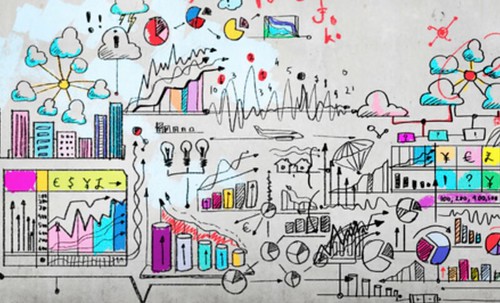The Big Value in Big Data? Prediction.
 Big Data and the Internet of Things are being touted as the new frontier for business, with new and innovative uses for connected devices being rolled out every day.
Big Data and the Internet of Things are being touted as the new frontier for business, with new and innovative uses for connected devices being rolled out every day.
Promising to unlock new levels of insight, enhance customer experience and improve safety and efficiency, Big Data is now on the brink of potentially transforming the way we live, work and think.
But, as the industry matures and utilizations become more sophisticated, where will the true value of Big Data lie?
Forecasting
Around the world, almost 13,000 people are killed annually by earthquakes, five million are affected by injury or loss of property and a massive $12 billion a year is lost in economic losses to the global economy. Needless to say, scientists have been searching for a way to predict devastating natural disasters, such as earthquakes, for some time.
ALSO by Nav Dhunay: The Big Data Promise
For many years, earthquake prediction relied almost entirely on monitoring the seismic frequency and using this to establish when earthquakes are most likely to happen – until now. Big Data analysis has began to open up a plethora of opportunity for earthquake forecasters who are now able to statistically analyse satellite and atmospheric data to predict earthquakes accurately anywhere around the world. Leaders in the field are already reaching 90% accuracy rates when forecasting earthquakes one to 30 days in advance. In this case, prediction of the unpredictable is able to significantly reduce losses, most notably in human life.
Prevention
With the world’s population increasing and human beings living longer, there has never been more pressure to sustain and improve global healthcare.
As the saying goes, ‘prevention is better than a cure’ and various developing solutions are now able to use analysis of rich pools of Big Data, collected from the very earliest stages of life in order to anticipate illnesses and allow people to shift behaviour in order to mitigate damage before it occurs.
Intelligent Automation
The financial and telecom industries have led the charge in the use and benefits of Big Data analysis. As the use of Big Data evolves however, numerous other industries will start to adopt and rely on the unique levels of insight it is able to deliver and utilize in order to predict the probability of future events. In doing so, industry will start to shift from being largely reactive to predictive.
By using intelligent data analytics, lightweight sensors and wireless networks with existing ‘chatty’ machines, industrial solutions are now being developed and commercialised that are able to leverage Big Data in profound ways.
Predicting whether a machine will likely fail or malfunction in the next minute, day or year, adapting the behaviour of machines to preempt changing site conditions or alerting of impending situations before they become dangerous, these are all compelling propositions for global industries which have a desire, or a governed requirement, to improve efficiency, safety and profitability while reducing environmental impact.
Predictions delivered through Big Data analysis – whether we’re aware of it or not – will undoubtedly play a bigger and bigger role in our everyday lives. As further innovative use cases are created, whether these be in predicting epidemics, earthquakes, traffic jams or droughts, the effects and potential benefits of intelligent insight are set to be immense.




